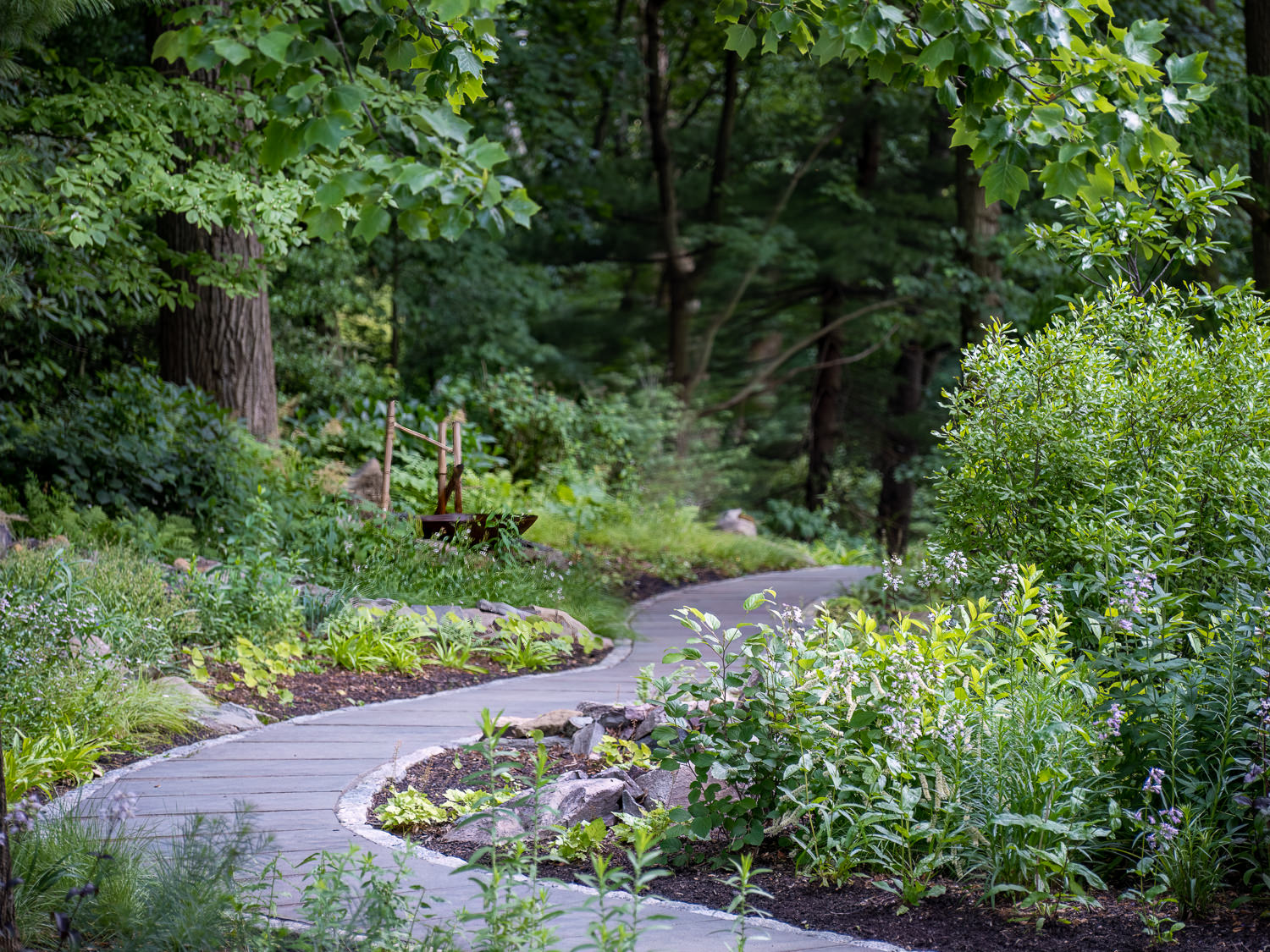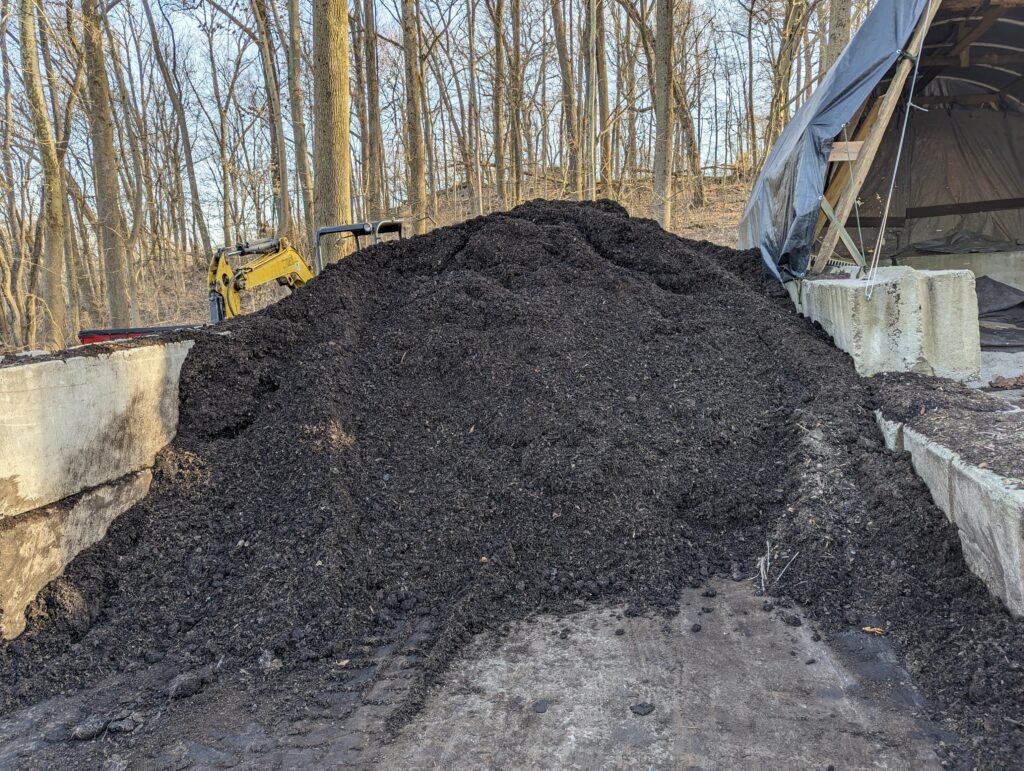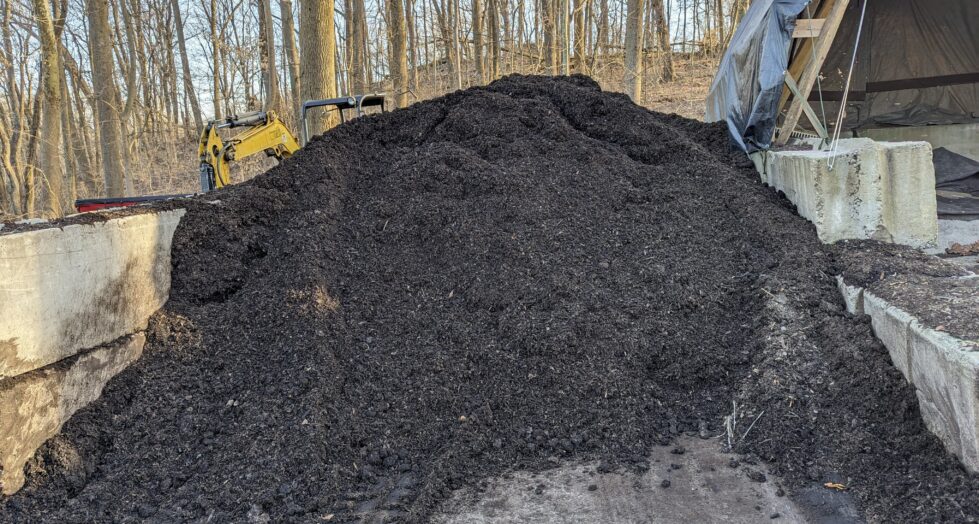Spring is the time of year for property cleanups and mulching beds. When it comes to mulching, there is more to know than you might initially think. Follow some advice from the experts to select the right type, do it correctly, and spend your money wisely.
Described below are some of the benefits of mulch, types of mulch, problems caused by improper mulching, and finally notes on how to mulch properly.
Benefits of Mulch
Weed suppression
When applied to a depth of 2-4 inches, mulch acts as a weed barrier. Although weed seeds can blow in and germinate on top of mulch, weeds in the soil layer are less likely to germinate due to lack of sunlight. Additionally, if weed seeds do germinate, they tend to be easier to remove in a mulched bed.
Moisture regulation
Mulch allows water to soak into the soil and protects it from evaporating. A layer of mulch also reduces the amount of water needed and the time necessary for repeated applications. Just make sure to water thoroughly so that the water reaches the entire root zone of your plants.
Improved soil
Natural, organic mulches break down and provides beneficial nutrients to the soil. Organic matter also improves soil texture, moisture retention, and a slow release of nutrients. This in turn, results in healthier plants and a more beautiful garden.
Erosion control
Mulch acts as a protective cover and helps prevent soil erosion. Sediment from eroded soil is a major contributor to water pollution. Plus, the top layer of soil is the richest in organic matter, so don’t let that wash away. Always cover bare soil. Using mulch is an excellent way to do this.
Plant protection
Mulch around your plants provides an excellent physical barrier between them and maintenance equipment. Too often, mowers and line trimmers create gashes in the trunks of trees. Tree roots suffer too when they are run over by mowers and aeration machines. Mechanical damage to trees creates wounds that invite infection, weakening and possibly killing the tree. So protect trees, especially ones in lawns with a layer of mulch at the base. Just make sure to mulch properly so you don’t create additional problems for your trees!
Types of Mulch
Green Mulch (Plants!)
Plants provide all of the benefits of other mulches plus many others! Ornamental plants add beauty, can provide food for humans and pollinators, and can outcompete weeds. Select native plants that also create habitat and actively manage storm water. Fill your beds with groundcovers and other plants, and you can often skip mulching altogether! If you are not sure where to start, work with a landscape designer to ensure great results.

Leaf mulch
This is the GreenWeaver favorite and great choice for sustainable gardens! For DIYers, you can Leave the Leaves on your property for free mulch! Just make sure to replenish if you find areas of bare soil. Use leaf mulch to mimic natural cycles, increase soil fertility, select local materials, and even reduce maintenance costs. In some areas, leaf mulch may be available through municipalities that collect leaves in the fall and then provide them back to residences in the community the following year.

Shredded hardwood mulch
Shredded hardwood is readily available, reasonably priced, spreads and smooths easily, and breaks down over a couple years. Its functional, tasteful, and an all around good choice for the garden. At GreenWeaver, we only use natural brown mulch.
In addition to natural brown mulch, there are now other color choices. Black mulch? Red mulch? How about purple or green? (Yes, it unfortunately exists.) More expensive than natural brown mulch, dyed mulch is marketed as better because it has dye that keeps it looking fresh longer. The dye is actually the most annoying part of the mulch. It’s messy to apply; it stains sidewalks; and the dye can even be tracked inside on shoes. Look at public gardens in your area and you will see they almost never use dyed mulch.
Pine straw
Pine straw, or pine needle mulch is commonly used in the south, but less so in the mid-Atlantic. It is light and very easy to apply and, surprisingly, doesn’t blow away. It is particularly good around acid-loving plants since pine straw has a low pH, and on slopes where other mulches may wash away. Pine needle mulch comes from the Carolinas, so it has a larger carbon footprint than locally produced leaf mulch. However, both leaf mulch and pine straw come from live trees and are low impact choices. Try pine straw in areas with pine trees for a natural appearance.
Licorice root mulch
Licorice root mulch is about 2-3 times more expensive than shredded hardwood. People like it because licorice root has anti-fungal properties which can help prevent artillery fungus. It is not available in bulk so you must buy it by the bag. In the Mid-Atlantic, it is sold under the brand name Right Dress.
Problems Caused by Improper Mulching
Simply put, too much mulch around the base of trees is bad for tree health. In the landscape industry, we call these mulch volcanoes.
It may seem obvious that plant root tissue and bark tissue have different requirements. Roots need to be underground to absorb water and nutrients. Similarly, bark tissue should be above ground where it can dry quickly and receive sunlight. When excess mulch is piled around the crown of a perennial or the trunk of a tree, that bark tissue stays moist for excessive periods. This excess moisture causes a number of problems including disease, rot, and adventitious root growth (roots that grow from confused plant cells) which stresses plants.
If you see mulch piled against the trunk of a tree, remove it until you see where the roots naturally flare away from the trunk. Be careful to protect the bark in the process.
*Note on Weed Barrier Fabrics- Fabrics are inferior to natural mulch because they prevent the organic matter in mulch from breaking down into the soil. Additionally, they are ineffective because weed seeds settle on top of the fabric and germinate. Finally, weed barriers are costly. For these reasons, GreenWeaver never recommends using weed barriers in the landscape.
How to Mulch Properly
- Define the mulch area and cut an edge to the bed if desired. Be careful not to cut roots of desirable plants.
- Spread 2-4 inches of mulch through the open areas.
- Avoid the base of perennials, shrubs, and trees.
- Remove any mulch that ends up on top of plants or against trunks of trees and shrubs.
- Smooth out any bumps and lumps. Get on your hands and knees for best results. Or, use the back of a rake for larger areas.
- Maintain mulch annually. Do not allow more than four inches of mulch to accumulate. If the goal is aesthetics and there is already enough mulch, either remove the old mulch and compost it, or sprinkle a very light decorative layer over the old mulch.
Now that you’re an expert, make sure any open areas in your garden get a healthy layer of mulch. And of course, contact GreenWeaver if you need help.


